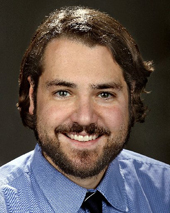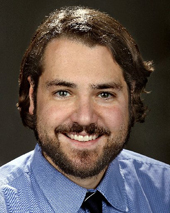There are two stories from the immediate aftermath of Sept. 11, 2001, that to me remain better than all the others. R.W. Apple wrote a news analysis that ran on the front of the New York Times on Sept. 12. Hank Stuever wrote an essay that ran on the front of the Style section of the Washington Post on Sept. 13. Apple? He unleashed on deadline a voice-of-God assessment of the far-reaching geopolitical implications, pretty much predicting the future. And Hank?
“I turned in a vibe,” he says now.
America opens at 9, which is to say 9-ish, which has become our saddest hour.
9:02, for example. Or 8:45, or 9:04.
Or 9:11, six minutes after the second jet hit the second tower, and the mind started connecting dots in a panic. At some point we may have stopped to consider the date, 9/11, which reads as 9-1-1, which is keypad-speak for: Oh God no, help, please. Perhaps the day could simply be called Nine One One.
Why’s this so good?
Start on Sept. 11. Hank, a two-time finalist for the Pulitzer Prize, had been at the Post for about two years, and his editor was Henry Allen, who in 2000 had won a Pulitzer for criticism.
 They by then had started to develop an almost telepathically good working relationship. One day a few months before Sept. 11, Henry came back from lunch, walked over to Hank’s desk and said, “Plastic patio chairs,” and Hank looked up and said, “Absolutely.” A week and a half later, he had written 1,915 words about the world’s most ubiquitous piece of quasi-furniture, their place assured in the pantheon of the all-time most Stuever-esque Stuever stories.
They by then had started to develop an almost telepathically good working relationship. One day a few months before Sept. 11, Henry came back from lunch, walked over to Hank’s desk and said, “Plastic patio chairs,” and Hank looked up and said, “Absolutely.” A week and a half later, he had written 1,915 words about the world’s most ubiquitous piece of quasi-furniture, their place assured in the pantheon of the all-time most Stuever-esque Stuever stories.
So on that blue-sky Tuesday, in a buzzing, mobilizing Post newsroom, Hank said to Henry something about how they always know when to get us, don’t they? Right around when we’re getting to work. Right around 9. Hank, they decided, would get up early the next morning to report.
It’s worth pausing here for a second to consider what we mean when we use that word. Reporting is not walking around with a tape recorder or a notebook and a ballpoint pen. It is not transcribing. It is not talking to as many people as possible. It is not collecting quotes. Reporting is all that, or can be, but it’s also observing and thinking and recognizing themes and ultimately earning the ability to say what there is to say. Reporting is work. Hank, an outsider by nature, is a keen observer and possesses the kind of original mind that sees meaningful differences between the convenience store chains Wawa and Sheetz and turns those perceptions into nearly 2,500 words of culturally relevant synthesis.
Early on the morning of Sept. 12, he worked downtown D.C., around 17th and K Streets. He reported “the overheard,” as he puts it, but he also dutifully filled his notebook with names and ages and quotes, “just in case” he ended up having to resort to a more traditional scene or mood piece. He didn’t, thank goodness – note that in the story there is no Johnny Johnson, 22, of Bethesda.
“I’m going to do the 9 o’clock idea,” Hank said to Henry when he got back to the office.
“Do it,” Henry said to Hank.
Here then is the part of the process where no one who does this job does quite the same thing. Some writers rarely outline, instead relying on something like rhythm and magic. Others are maniacal organizers, armed with three-ring binders and color-coded tabs. Reporters working on bigger stories have been known to take over entire offices, doing storyboards with posters taped to walls. There is no one, right way, but Hank often finds himself in the camp that relies on magic. He cites Joan Didion – she has said she doesn’t know what she thinks until she writes it down – and he believes what Henry believes – the good stuff comes from the anxious energy that comes from a great idea and a blinking cursor – and so he sits, and he trusts.
Locate the right tenor and tone. Universal, but not Op-Eddy; a lot, but not too much. This, Hank reminded himself sitting in front of the screen, does not have to be the final word on everything and all it means. “Don’t light the candles. Don’t summon the Gods. Don’t do any of that.” Like Henry says in essence, then and now, less throat-clearing, more throat-grabbing. And so go.
“I remember,” Hank says, “just hitting a groove and playing with type.”
The fourth paragraph:
Apart from the middle of the night, or the predawn, which are both fraught with simple darkness and somnolent vulnerability, 9 o’clock has taken on a peculiar quality all its own: terror before the day even really gets started, before the second cup of coffee, just before the staff meeting you’d as soon not go to, just when you think you’re five minutes ahead by being five minutes behind.
And then the fifth:
The people who would kill ordinary Americans in order to make a point have zeroed in on the humdrum of our early-mid to mid-mornings, with the idea that we’re all up and at our desks doing … doing what, exactly? In somebody’s interpretation we are busily playing our notes for an intricate orchestra of Western evil, of conspiracy, of a capitalist McDomination.
The world-class wordplay that started with keypad-speak for: Oh God no continues with intricate orchestra and capitalist McDomination. Fun is perhaps the wrong word, considering the content, but Hank is making music. There are many different ways to keep the reader reading, which is a mandate of the craft, but on the list certainly are little, interspersed pulses of awesomeness. Roy Peter Clark calls them gold coins. One here, one there, and they’re enough to train the reader to expect the next. To want it. NPR’s breakfast drone of militant rebels in jungles of countries with new names? That’s a gold coin. And later, down toward the bottom, the innocent working lives in tragic triplicate? That’s another.
This is a piece that has a sort of spotty natural propulsion. The primary engine is the strength and sequence of the ideas. In places, though, Hank crafts forward movement, equating sights, smells and sounds with times of the morning. We can hear the truck backing up. We can hear the brakes on the bus. We can all but hear the tick of the clock implicitly tied to the scream of the planes. This tactic does a couple things: 1. Movement can be as simple as Monday to Tuesday, light to dark, and here it’s 8:45 to 8:52 to five of nine and so forth. The reader is not stopping in between those points. 2. It quietly knits together the mundane with the dread of the day.
That’s important. Because all of this is flash and brilliance and not much more if it’s not attached to an idea that undergirds the structure of the piece as a whole. It turns out broad daylight was so much scarier. Hank had earned the right to say that. A new era of unshakeable unease.
It starts with five paragraphs that are beautiful. It ends with three that are pitch-perfect.
The 9 a.m.-ness of it all came raining down: all 243 pages of the committee report on the interface transfer, all those shreds of capitalistic minutiae, all those desk ferns and coffee mugs and Hang in there it’s almost Friday posters, the blue copy, the pink copy, the yellow copy, the innocent working lives in tragic triplicate.
How the morning went so wrong.
But, oh, a day later: It’s a little bit before 9 o’clock and everyone who could went back to work. The trucks were beeping, the line formed at Starbucks, and the eye contact we made with each other said what we didn’t have to.
Henry, when he talks about this story, talks about the great 18th-century English poet Alexander Pope: What oft was thought but ne’er so well express’d. “You read this piece,” he says, “and you say, ‘That’s right, that’s right, that’s right.’”
Michael Kruse is a staff writer at the St. Petersburg Times and a contributing writer for Grantland. He won ASNE’s 2011 award for distinguished nondeadline writing.
For more from this collaboration with Longreads and Alexis Madrigal, see the previous posts in the series. And stay tuned for a new shot of inspiration and insight every week.


